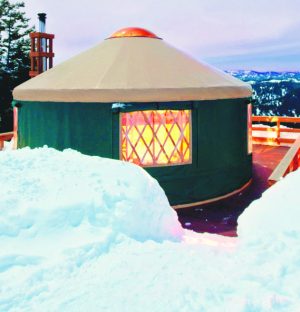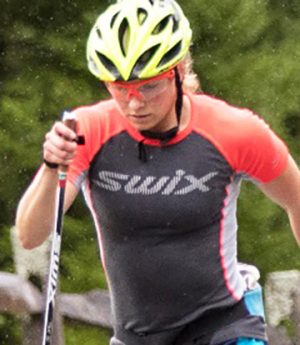September 18, 2010 (Waltham, MA) – Here’s a brief look at some of the presentations at the NENSA Nordic Symposium on Day 2. The sessions began at 8:30am this morning with Developing Cross-country Ski Skills and Fitness Through Dance and Game Play by Donna Smyth (Keene State College) and continued with a Physiology Presentation by Zach Caldwell (Caldwell Sports), Eating Disorders in Nordic Skiing – What Role Should a Coach Play? by Tracey Cote (Colby College), then Compartment Syndrome in XC Skiers. A look at Potential Causes and Prevention – Kurt Jepson, PT, USST Medical provider, followed by keynote speaker, Dave Wood (former Canadian Head Coach), and his talk on A Glimpse into the Canadian Development Pathway – more to follow.
![The wax for the day was CH10 C (for carpet) at Donna Smyth's presentation, Developing Cross Country Ski Skills and Fitness Through Dance and Game Play. [P] Sue Wemyss](http://skitrax.com/wp-content/uploads/2010/09/NENSA-Sympos-D2-002.2.jpg)
Donna Smyth opened the day with a very dynamic presentation on using games and dance to teach basic ski skills and improve agility and technique. Smyth led the participants in the Hokey Pokey, Chicken Dance, and games of tag. She then connected the active drills with a video of herself leading a class on snow doing the same things. It was a great way to get everyone awake and ready for the day’s other presentations. – RB
Physiology Presentation – Zach Caldwell, Caldwell Sports
Zach Caldwell gave an insightful presentation on physiology using his experience coaching Kris Freeman. He posed the question of how do develop our physiology to lead us to consistently great performances. He told the stories of how some of Freeman’s best performances came about by mistake. However, from those mistakes Zach was forced to re-think what sort of training would provide Kris the chance to have successes on purpose instead of by accident. While being really fit is a requirement for top performance, it is not sufficient. What does seem to be necessary is the ability to reach a high-energy state and accelerate through the final third of a race. A big part of reaching high energy levels is focusing on training the ability to recover and never working so hard that you reach a state of deep fatigue. Caldwell then showed videos to demonstrate how he has changed his ideas on technique to engage the physiological capabilities. By improving relaxation, elasticity, and release a skier can improve muscular economy and attain higher speeds throughout the entire race. – RB
Eating Disorders in Nordic Skiing – What Role Should a Coach Play? – Tracey Cote, Colby College
Tracey Cote, head coach at Colby College, gave a talk on eating disorders in athletes. One of her key points was that although coaches are often the ones to spot a problem, they should not try to deal with an eating disorder – instead they should hand off the athlete to trained medical professionals. She suggested setting up a Resource Pathway of physicians, nurses, and nutritionists who can evaluate and treat an eating disorder. It’s very important to identify an athlete with eating disorders and get proper treatment before the disease gets advanced. – RB
![Kurt Jepson spoke on Exertional Compartment Syndrome (he told me that if he smiled no one would recognize him). [P] Sue Wemyss](http://skitrax.com/wp-content/uploads/2010/09/Kurt-Jepson-NENSA-Sympos-D2-005.2.jpg)
Kurt Jepson, a Physical Therapist who has been working with the U.S. Ski Team for the past dozen years, presented on Exertional Compartment Syndrome. He provided a thorough explanation of lower leg physiology, the potential problem area for Nordic skiers. The presence of ECS is determined by examining pressure differences in the muscle tissue post-exercise. Jepson detailed management and treatment recommendations, which in most cases, involves surgery. – SW
A Glimpse into the Canadian Development Pathway – Dave Wood
Dave Wood, former Canada National Team head coach, delivered a comprehensive description of the entire Canadian system of athlete and coach development. For the Americans in the audience it was fascinating to hear how things are organized at the local, provincial, and national level. He felt that the creation of regional training centers was a key to the success of the Canadian team at last winter’s 2010 Olympics. He also thought that the Long Term Athlete Development Model had improved programs at all levels and provided more continuity in athlete development. – RB






![National camp action [P]...](https://skitrax.com/wp-content/uploads/2019/08/Duluth-4-2019-08-08-at-10.46.51-AM-300x246.png)
![Matt Liebsch on the CXC Elite Team [P] CXC...](https://skitrax.com/wp-content/uploads/2019/08/Matt-Liebsch-CXC.2-525x700.4-300x267.jpg)
![Dan LaBlanc [P]...](https://skitrax.com/wp-content/uploads/2019/08/Dan-LaBlanc-img_1855.3.jpg)
